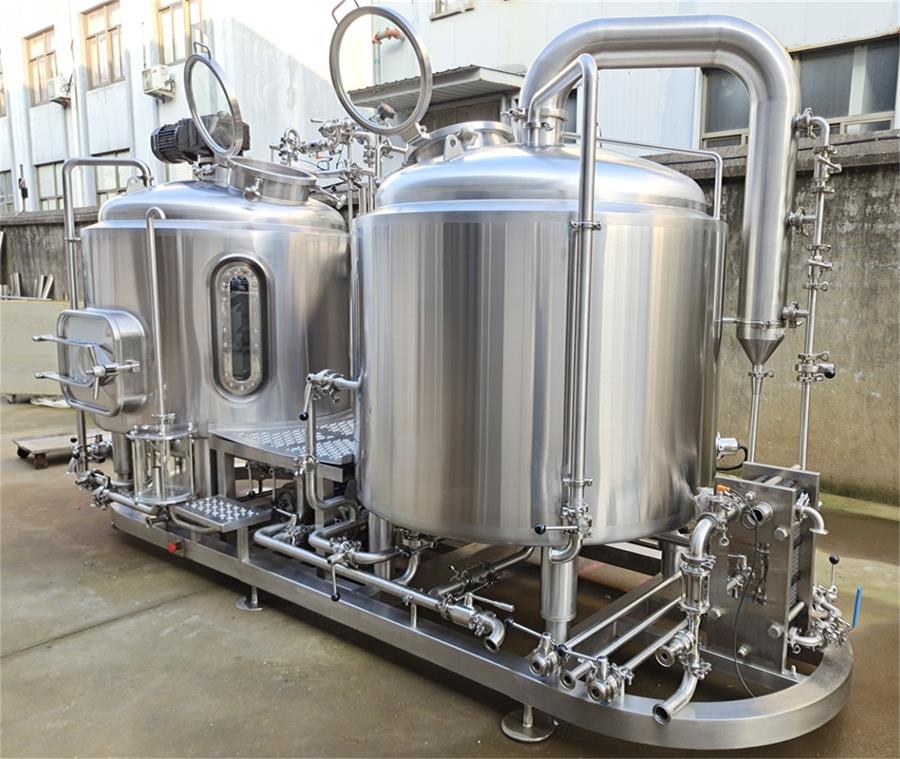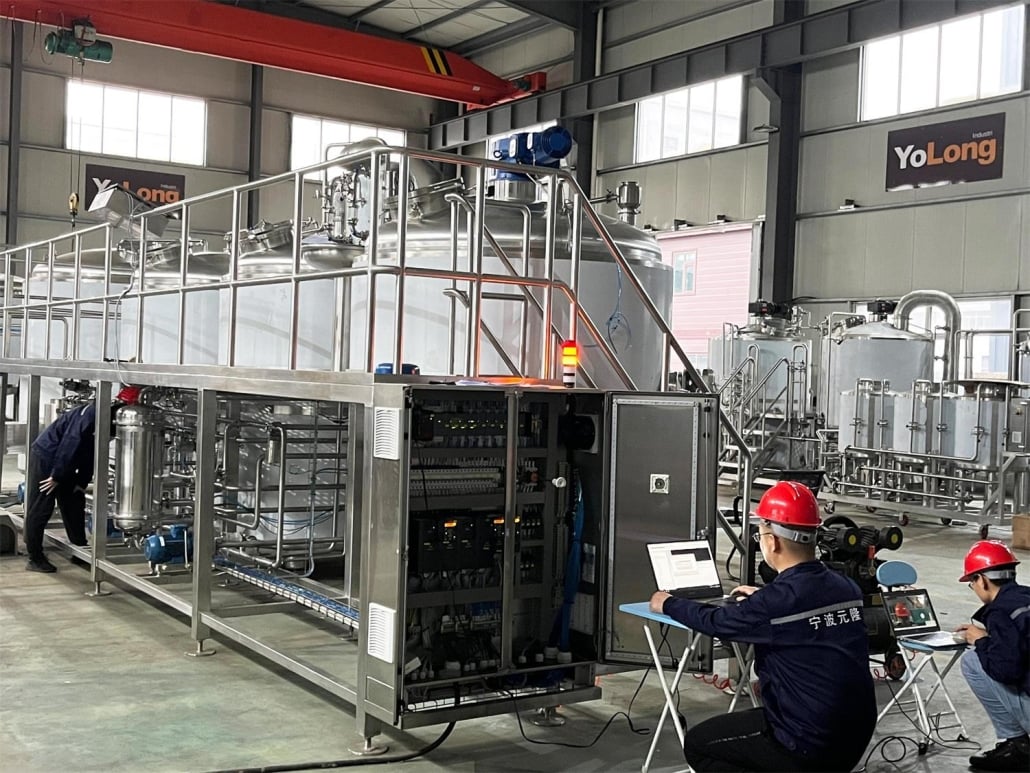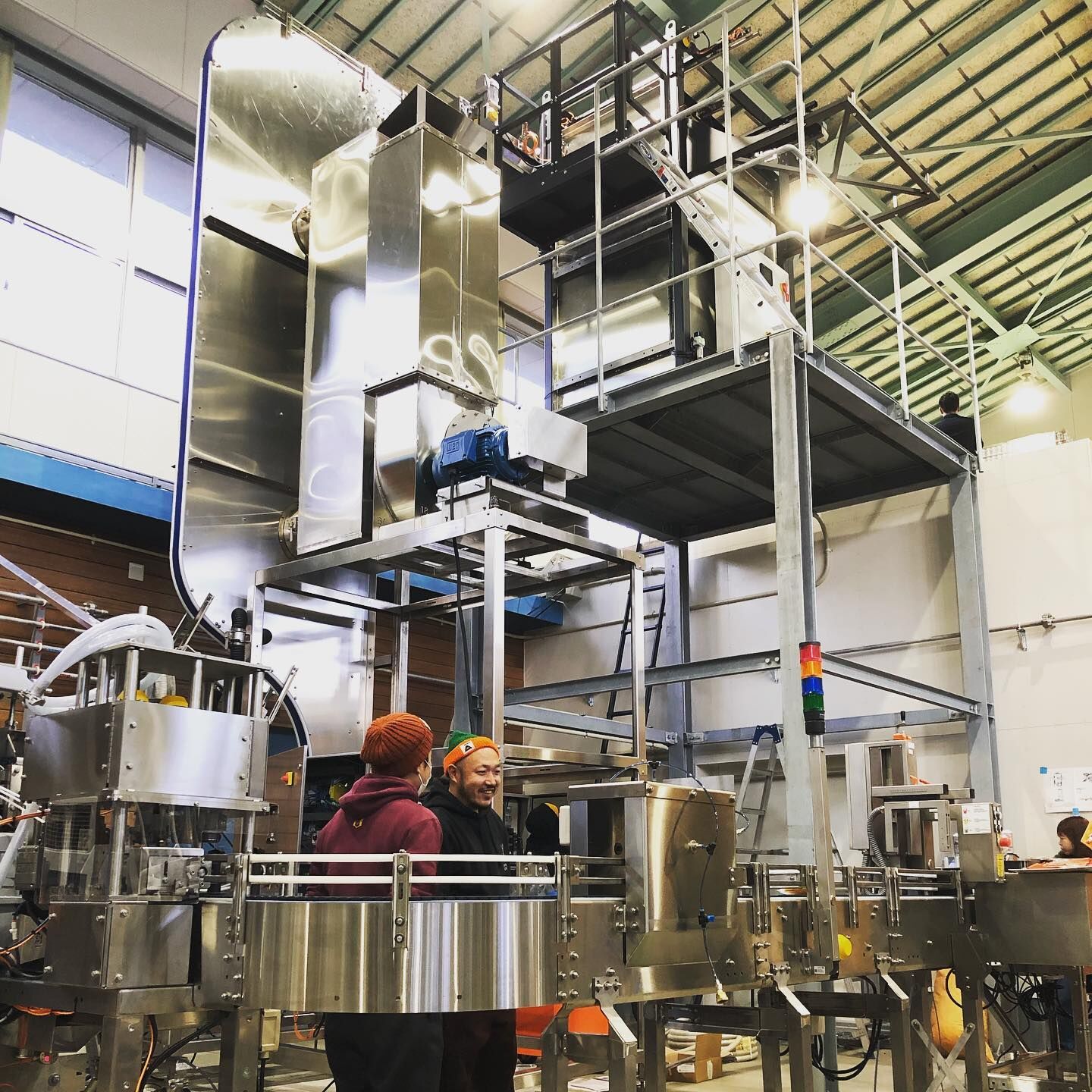Nano Brewery Startup
Starting a nano brewery is an exciting adventure for any craft beer enthusiast. This detailed guide will take you through every step of launching your nano brewery startup, from understanding the basics to choosing the right equipment and suppliers. We’ll also dive into the brewing process, layout design, and key considerations for maintaining and growing your business. By the end of this article, you’ll have a clear roadmap for turning your passion for craft beer into a successful nano brewery.
Overview of a Nano Brewery Startup
Nano breweries are small-scale brewing operations typically producing batches of beer under 4 barrels (about 124 gallons or 468 liters) per brew. They offer a unique opportunity for beer enthusiasts to start brewing on a commercial scale without the massive investment required for larger breweries. Nano breweries often operate with a strong focus on creativity, producing small batches of unique beers that cater to local markets or niche audiences.
Starting a nano brewery involves not just brewing skills but also knowledge of equipment, layout design, regulatory requirements, and marketing strategies. Let’s explore these aspects in detail.

Understanding the Nano Brewery Equipment
Overview of Nano Brewery Equipment
The equipment you choose for your nano brewery will significantly influence the quality of your beer, your production capacity, and your overall operational efficiency. It’s crucial to select equipment that matches your production goals, budget, and space constraints.
Equipment Guide: What You Need to Get Started
The primary equipment for a nano brewery includes brewing kettles, fermenters, kegs, cooling systems, and a bottling line. Depending on your space and budget, you might also invest in a wort chiller, a grain mill, and a filtration system. Let’s break down the essential equipment into categories:
| Equipment Type | Details |
|---|---|
| Brewing Kettle | Used to boil the wort, essential for brewing. Sizes vary based on batch size. |
| Fermenters | Vessels where wort is fermented into beer. Available in various sizes and materials (steel is best). |
| Kegs | For storing and serving beer. Nano breweries typically use smaller kegs like Cornelius kegs. |
| Cooling Systems | Crucial for controlling fermentation temperatures, can be simple ice baths or advanced glycol systems. |
| Bottling Line | Automates the bottling process. A tabletop bottling line is sufficient for nano breweries. |
| Wort Chiller | Speeds up the cooling of the wort after boiling, preventing contamination. |
| Grain Mill | Crushes malted barley, a vital step in the brewing process. |
| Filtration System | Helps clarify beer, removing unwanted particles before packaging. |
Choosing the Right Equipment
When selecting equipment, it’s essential to balance quality with cost. Stainless steel equipment is durable and easy to clean, making it a popular choice. However, it’s also more expensive than other materials like plastic. Consider the scalability of your equipment as well—buying larger or more efficient machines can save money in the long run if you plan to expand.
The Brewing Process: From Grain to Glass
Brewing Process Overview
Brewing beer is a complex process involving several stages: mashing, lautering, boiling, fermenting, conditioning, and packaging. Each stage requires careful control to ensure the final product is of high quality.
Detailed Brewing Process
- Mashing: This is the first step, where milled grain (usually malted barley) is mixed with water and heated. The heat activates enzymes that convert starches into fermentable sugars.
- Lautering: After mashing, the mixture is transferred to a lauter tun. Here, the liquid wort is separated from the grain husks.
- Boiling: The wort is then boiled, typically for 60-90 minutes. Hops are added during this stage, contributing bitterness, flavor, and aroma.
- Fermentation: Once the wort is cooled, it’s transferred to a fermenter, and yeast is added. The yeast converts the sugars into alcohol and carbon dioxide, creating beer.
- Conditioning: After primary fermentation, the beer is conditioned. This can happen in the fermenter or in bottles/kegs. It allows the flavors to develop and mature.
- Packaging: Finally, the beer is packaged into bottles, cans, or kegs for distribution.
Brewing Process Table: Equipment, Capacity, and Customization
| Stage | Equipment Needed | Capacity | Customization | Space Requirement |
|---|---|---|---|---|
| Mashing | Mash tun | Based on desired batch size | Adjustable temperature control | Medium (requires space for mash tun and stirring mechanism) |
| Lautering | Lauter tun | Sized to match mash tun | Sparging system adjustments | Medium to Large (space for the lauter tun and sparging system) |
| Boiling | Brew kettle, heat source | 1-4 barrels | Adjustable boil-off rate | Medium (space for brew kettle and heat source) |
| Fermentation | Fermenters (stainless steel or plastic) | Matches batch size | Temperature control, multiple vessels | Large (space for multiple fermenters) |
| Conditioning | Conditioning tanks, bottles, or kegs | Based on batch size | Carbonation control | Medium to Large (depends on conditioning method) |
| Packaging | Bottling line, kegging equipment | Depends on production scale | Automated or manual systems | Small to Medium (space for packaging equipment) |
Brewing Capacity and Layout Design
Designing the layout of your nano brewery is critical for efficient operations. The layout should allow for a smooth flow of materials and products from one stage to the next. Equipment placement should minimize the need for moving heavy items, which reduces the risk of accidents and improves workflow efficiency.
Key Layout Considerations
- Space: Ensure there’s enough room for each stage of brewing. Crowded spaces can lead to accidents and inefficient operations.
- Flow: Design your brewery layout to follow the brewing process logically—from mashing to packaging. This minimizes backtracking and streamlines production.
- Utility Access: Ensure all equipment has easy access to water, electricity, and drainage. This is especially important for brewing kettles and fermenters, which require regular cleaning and maintenance.
- Customization: Depending on your space and production goals, you might need custom equipment or layout designs. For instance, a compact space might benefit from vertical brewing systems.
Layout and Design Table: Capacity, Spaces, Customization
| Aspect | Capacity | Space Requirements | Customization Options |
|---|---|---|---|
| Mash & Lauter | 1-4 barrels | Medium to Large | Integrated mash/lauter tun system |
| Fermentation | 1-4 barrels | Large | Modular fermenters |
| Packaging | Small batch sizes | Small to Medium | Tabletop bottling lines |
| Cooling | Varies by system | Small | Compact glycol systems |
Choosing the Right Suppliers
How to Choose a Supplier for Your Nano Brewery
Selecting the right supplier is one of the most crucial decisions you’ll make when starting a nano brewery. The right supplier can provide quality equipment, reliable support, and favorable payment terms.
Supplier Selection Criteria
- Reputation: Look for suppliers with a strong track record in the brewing industry. Read reviews, ask for references, and speak to other brewers who have used their equipment.
- Support: Ensure the supplier offers good after-sales support, including installation, training, and maintenance services. You want a partner who will help you solve problems, not just sell you equipment.
- Cost: While it’s tempting to go for the cheapest option, remember that quality often comes at a price. It’s better to invest in durable equipment that will last than to save money upfront and face costly repairs later.
- Customization: If your brewery has specific needs, like limited space or unique brewing processes, make sure the supplier can customize their equipment to fit your requirements.
Supplier and Price Range Table
| Supplier | Equipment Type | Price Range | Customization Available | Support Services |
|---|---|---|---|---|
| ABC Brewing Co. | Complete brewing systems | $20,000 – $50,000 | Yes | Installation, training, and maintenance |
| BrewTech Supplies | Fermenters, kettles, packaging | $10,000 – $30,000 | Limited | 24/7 support, maintenance plans |
| CraftBeer Equip | Specialized brewing equipment | $15,000 – $40,000 | Yes | Custom installation, ongoing support |
| NanoBrew Tech | Compact systems for small spaces | $8,000 – $25,000 | High level of customization | Online support, on-site installation |
Installation, Operation, and Maintenance of Nano Brewery Equipment
Installation
Installing your nano brewery equipment is a critical phase that requires careful planning. Ensure that all equipment is set up according to the manufacturer’s specifications and that it’s fully operational before beginning your first brew.
- Professional Installation: Consider hiring professionals to install complex systems like fermenters and glycol chillers. This reduces the risk of installation errors that could lead to operational issues.
- Compliance: Make sure your installation meets all local health and safety regulations. This might involve inspections from health departments or fire marshals.
Operation
Once your equipment is installed, operation should focus on consistency and efficiency. Develop a standard operating procedure (SOP) for each stage of brewing to ensure every batch meets your quality standards.
- Training: Invest in training for yourself and any staff. Understanding how to operate and troubleshoot your equipment will save time and money in the long run.
- Monitoring: Keep a close eye on critical factors like temperature and fermentation time. Consistent monitoring can help catch problems before they ruin a batch.
Maintenance
Regular maintenance is key to keeping your brewery running smoothly. Follow the manufacturer’s maintenance schedule to prevent breakdowns and extend the life of your equipment.
- Cleaning: Clean all equipment thoroughly after each use to prevent contamination. This is especially important for fermenters and kegs.
- Repairs: Address any equipment issues immediately. Even small problems can lead to significant downtime if not resolved quickly.
Installation, Operation, and Maintenance Table
| Phase | Key Considerations | Action Items | Outcome |
|---|---|---|---|
| Installation | Proper setup, compliance | Hire professionals, inspect systems | Safe, operational brewery |
| Operation | Consistency, efficiency | Develop SOPs, train staff | High-quality beer production |
| Maintenance | Preventive care, cleaning | Regular cleaning, follow maintenance schedules | Long-lasting, efficient equipment |
Pros and Cons of Starting a Nano Brewery
Advantages of a Nano Brewery Startup
Starting a nano brewery comes with several distinct advantages, particularly for those who are passionate about craft beer and looking to enter the brewing industry without a massive financial investment.
- Lower Startup Costs: Compared to micro or large-scale breweries, the initial investment for a nano brewery is significantly lower. This makes it more accessible for individuals or small partnerships.
- Flexibility: Nano breweries offer a high level of flexibility in terms of beer production. You can experiment with different styles, ingredients, and brewing methods without the pressure of producing large batches.
- Community Focus: Nano breweries often have a strong connection with their local communities. They can cater to local tastes, participate in local events, and build a loyal customer base.
- Easier Scaling: If your nano brewery becomes successful, scaling up to a microbrewery or larger operation is relatively straightforward. You can reinvest profits into bigger equipment or a larger space as your demand grows.
Challenges of a Nano Brewery Startup
However, starting a nano brewery is not without its challenges. Understanding these challenges will help you prepare better and set realistic expectations.
- Limited Production Capacity: The small scale of a nano brewery means your production capacity is limited. This can make it difficult to meet high demand or compete with larger breweries on volume.
- Labor-Intensive Operations: Due to the small scale and potential lack of automation, nano brewing can be very labor-intensive. You may find yourself working long hours, especially in the early stages.
- Financial Pressure: While the initial costs are lower, the margins on small-batch brewing can be tight. It’s essential to manage your finances carefully and plan for slower growth in the early years.
- Regulatory Challenges: Navigating the legal landscape for alcohol production and sales can be complex. Ensuring compliance with all local, state, and federal regulations requires diligence and sometimes professional help.
Pros and Cons Table: Advantages and Challenges
| Aspect | Advantages | Challenges |
|---|---|---|
| Startup Costs | Lower initial investment compared to larger breweries | Limited resources for initial marketing and expansion |
| Production Flexibility | Ability to experiment with different beer styles and brewing techniques | Limited production capacity can restrict growth potential |
| Community Connection | Strong ties to local community, easier to build a loyal customer base | May struggle to compete with larger breweries with more extensive distribution networks |
| Scalability | Easier to scale up as demand grows, reinvest profits into expansion | Scaling can require significant additional investment and planning |
| Operational Flexibility | Ability to adapt quickly to market trends and customer preferences | Can be labor-intensive and time-consuming, especially in the initial stages |

FAQ
What is a Nano Brewery?
A nano brewery is a small-scale brewing operation, typically producing beer in batches of 3 barrels or less. It is often characterized by its flexibility, creativity, and strong focus on local markets.
How much does it cost to start a Nano Brewery?
Startup costs for a nano brewery can range from $20,000 to $100,000, depending on the scale of the operation, the quality of equipment, and the location. This cost includes equipment, space, licensing, and initial raw materials.
What are the main pieces of equipment needed for a Nano Brewery?
Key equipment includes brewing kettles, fermenters, cooling systems, and bottling or kegging lines. Depending on your setup, you might also need a wort chiller, grain mill, and filtration system.
How much space do I need for a Nano Brewery?
The space required depends on your production goals and the equipment size. A small nano brewery can operate in as little as 500 square feet, but more space allows for easier operations and potential future expansion.
What are the legal requirements for starting a Nano Brewery?
Legal requirements include obtaining brewing licenses, adhering to health and safety regulations, and ensuring your operations comply with federal, state, and local alcohol production laws. The specific requirements vary by location, so it’s essential to consult with local authorities.
Is a Nano Brewery profitable?
A nano brewery can be profitable, but it typically requires careful financial management, a strong brand, and community support. Profit margins may be slim initially, but successful nano breweries often see growth through local sales, events, and eventually scaling up production.
FAQ
| Question | Answer |
|---|---|
| What is a Nano Brewery? | A small-scale brewing operation producing under 4 barrels per batch, focusing on creative, local beer production. |
| Startup Costs | Typically ranges from $20,000 to $100,000 depending on equipment, location, and scale. |
| Key Equipment | Brewing kettles, fermenters, cooling systems, bottling/kegging lines, wort chiller, grain mill, filtration system. |
| Space Requirements | Minimum of 500 square feet, more is better for operations and future growth. |
| Legal Requirements | Varies by location, but includes brewing licenses, health and safety regulations, and compliance with federal, state, and local alcohol production laws. |
| Profitability | Potentially profitable with careful management, strong branding, and community support. Growth and scaling can increase profitability over time. |
Conclusion
Starting a nano brewery is an exciting and challenging venture that can be highly rewarding both personally and financially. While the road to success is paved with hard work and careful planning, the opportunity to create and share unique craft beers with a loyal customer base is a dream for many beer enthusiasts. By understanding the key elements of equipment, brewing processes, layout design, and supplier selection, you can position your nano brewery for success in the competitive world of craft brewing.
As you move forward with your nano brewery startup, keep this guide as a reference to help navigate the complexities of the industry. With passion, dedication, and a bit of business savvy, your nano brewery can become a beloved local institution and perhaps even grow into something bigger.
Share this entry
Interested in learning more about Brewing Systems including additional details and pricing information? Please use the form below to contact us!
YOLONG BREWERY EQUIPMENT FAQS
- Commercial Brewery / Craft Brewery / Microbrewery / Nanobrewery
- What is The Difference Between Craft Beer and Industrial Beer?
- The Bespoke Differences In Custom Brewing Systems
- Everything You Need to Know About Kettle Souring
- How to Choose Brewing Equipment for Your business?
- How To Choose The-Best Partner To Build Your Commercial Microbrewing System?
- Two Detection Sensors That You Need To Use In Your Brewhouse System
- Remote Control Applications in Brewing Equipment/How does it work?
- How To Clean Your Brand New Brewery Tanks?

